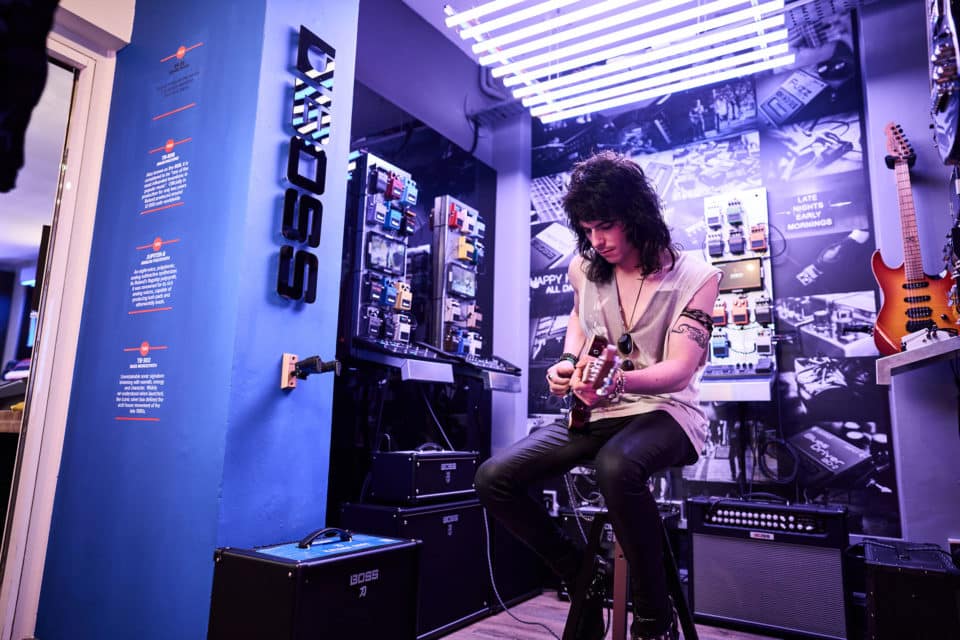Top Sporting Goods Brands Not Fit for Omnichannel Services
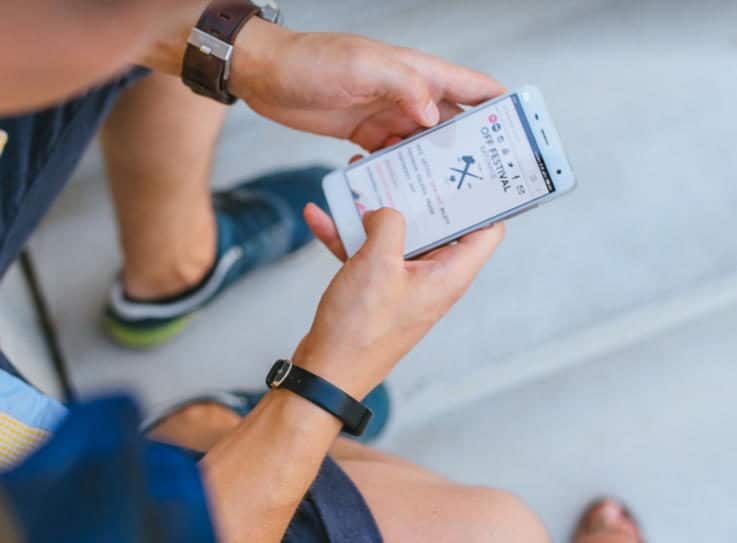
In this guest post, Mauritz Schild puts London’s top sporting goods stores to the test in rating their omnichannel offerings:
“Most brands are pretty bad at omnichannel services.” That was the conclusion I came to during a recent online-offline study tour in London. Asics, Adidas, New Balance, Nike, and Puma were my main brands of interest. To assess them, I researched omnichannel best practices of a wide range of brands and retailers, created a scorecard, and built a store assessment app. In late August, I went on a field trip to London to find out how well they performed.
Despite a growing e-commerce trend, brick and mortar remain the most important points of sale. As a millennial, I grew up with Facebook & Co, chat with friends halfway around the world over WhatsApp, and do a good part of my shopping online. I have my smartphone with me at all times, and yet, along with 82% of my generation, I still prefer physical stores over the online experience.
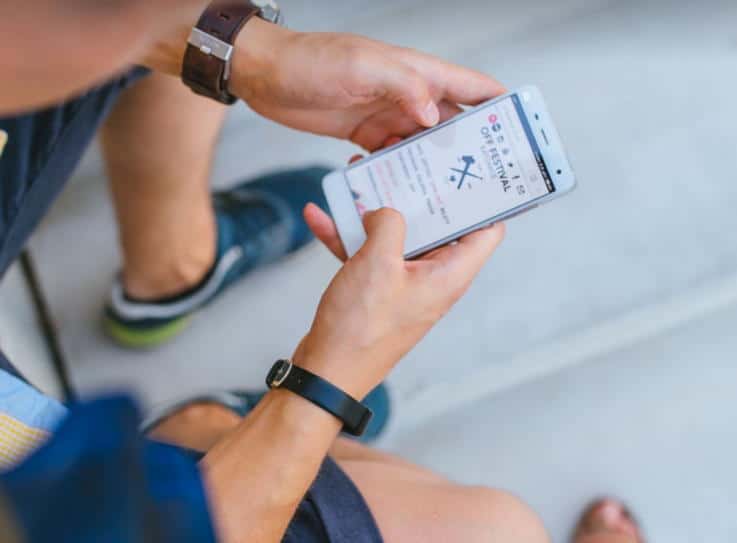
Study Methodology
I started my personal omnichannel service journey online. I looked around all retail industries to find best practice examples of store locators, omnichannel marketing, and other cross channel services. For my store checks, I chose London because it is referred to as “Europe’s Digital Retail Capital”. I purposefully targeted top sporting brands, as I expected them to be the most advanced in omnichannel services.
In order to assess the brands and their omnichannel service adequately, I created a scorecard that rates each brand and their top stores in London on four omnichannel categories. I designed the categories and scorecard based on my research about other European retailers and brands. For convenience, I plotted the scorecard into Google Forms and was able to enter my findings while on location.
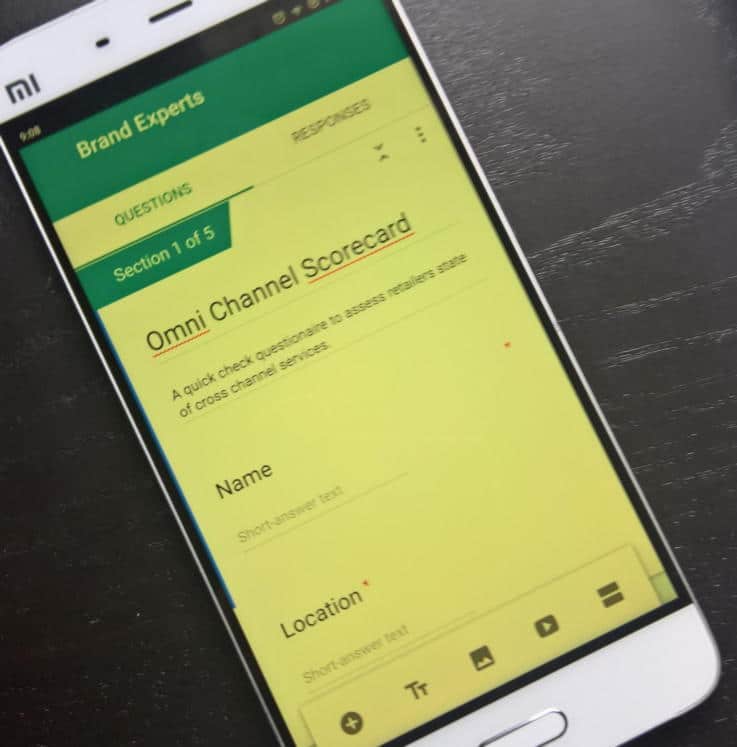
My findings are based on observations in the brands’ flagship stores in August 2017. Stores at other locations and at a different time may yield diverging results.
1. Store Locator
First, I turned my attention to the convenience of preparing a store visit. To that end, I studied the quality and quantity of information available on the brands’ store locator, the scope of POS (only own stores or also third party), categories offered, and the usability of the store locator.

•Asics: Asics scored only two points in this category as their store locator, as well as the information it provided, was rather basic. You’ll find the classical Google Maps overview of stores with opening hours, telephone, and address, but nothing more.
•Adidas: Unlike all other brands, Adidas performed well in this category. The store locator not only lists all stores including the different brands they sell but also all 3rd party stores, whether small corner shop or a large warehouse. In some cases, it even lists detailed information on product availability.
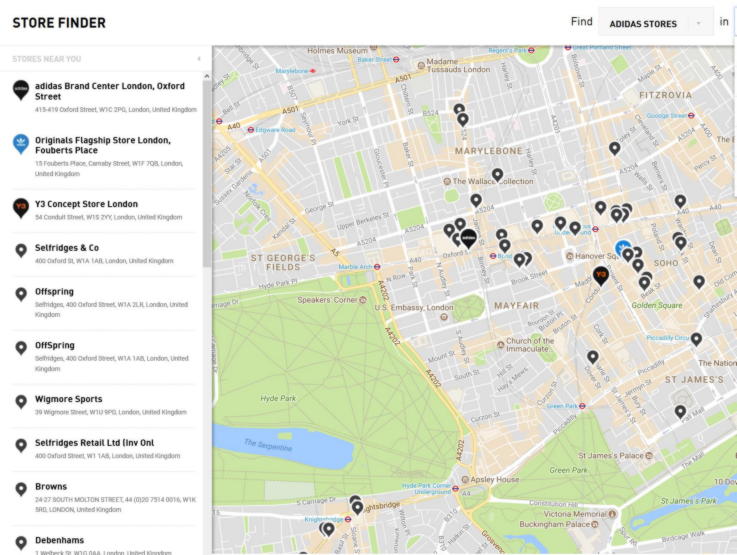
•New Balance: New Balance also only received two points, but would have scored higher, had their store locator been up-to-date. Their London flagship store was not listed as a store on their website, nor store locator. On the up-side, it’s possible to filter New Balance stores by carried products, even 3rd party stores.
•Nike: Once again, only two points as Nike’s store locator only offers basic information and no information about 3rd party stores that carry Nike’s products.
•Puma: Like the other two-point-brands, Puma only lists basic information and no sign of any 3rd party stores on the store locator.
2. Pre-Shopping Services
Pre-shopping services, in addition to the information provided on the store locator, cover the quality and quantity of customer focused services available before consumers decided to make a purchase. They include Click & Collect, social media information, or ease of use.

•Asics: Asics only scored one point in this category as there was almost no sign of omnichannel services like Click & Collect anywhere on the website or on social media. While the store did feature a community space, the online sign-up was done through a Facebook group with little to no interaction with the community.
•Adidas: While two points are nothing to boast of, Adidas did perform slightly better than most. The reason for this is Adidas’ superior social media presence and the option for customers to pick up their orders at any of the Collect+ stations around the country – even if orders could not be picked up at Adidas stores.
•New Balance: Like Asics, New Balance only receives one point in this category because they have very little social media presence, and only allow customers to ship orders to their home address or UPS access points.
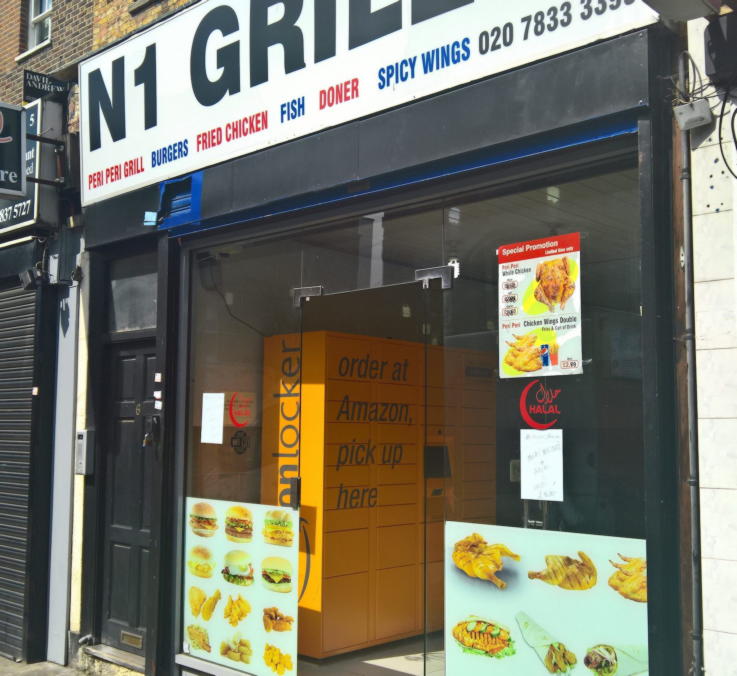
•Nike: Nike scores rather well in this section, earning four points in total for offering Click & Collect at their stores, as well as letting the customer know early on that this option is available, instead of only showing it during the checkout process.
•Puma: Puma receives zero points here, because the available service is very basic at best. There is no option for Click & Collect of any sort, only the main company page is on social media, and while shopping on the European site of Puma, there was no store locator to speak of. I had to find the U.S. website and use their store locator to find a store in London.
3. Omnichannel Communication
As a third area of research, and the first in-store category, I was interested in the engagement of store clerks with omnichannel services, their ability to transfer customers from offline to online, and in-store technology to facilitate a seamless experience.

•Asics: Asics scores only one point in this section even though the store had a large interactive video wall. At the time of my visit, however, it had been out of order for some time. Store clerks were also unable to place customer orders online and ship products home.
•Adidas: While Adidas store clerks can order products online for customers, there were little to no interactive elements in the store. I was hard pressed to even find any reference to their online store or social media presence besides the little indication on the store directory that Click & Collect is available downstairs.
•New Balance: New Balance does not offer customers the ability to order online while in-store either. However, the store did have an interactive community display on the wall that showed runs completed by the New Balance running group and receives two points for that.
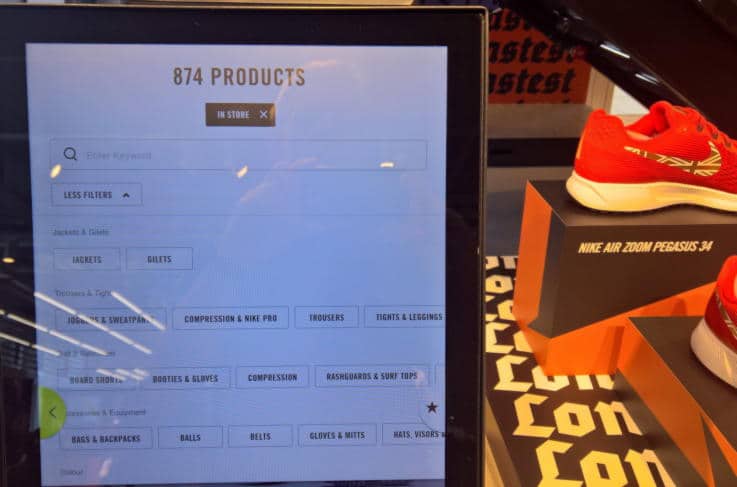
•Nike: Once again, Nike scores four points. This has to do with the store offering several areas of customization and store clerks carrying iPods with credit card readers on the back to let customers place orders online or pay for any products purchased in-store.
•Puma: Puma receives another zero points in this category because there was no hint to their online store, customers could not place orders online while in store, and the screens they did have in-store only functioned partially, if at all.
4. After Sales Service
As a final category, I researched the available options for home delivery and the return of products.

•Asics: Asics scores another one point as customers can only return products at the store where they were purchased.
•Adidas: Adidas scored a solid three points here because customers can get their products delivered to several locations, and can also return products bought online in a store.
•New Balance: Like Asics, New Balance only scores one point because products can only be returned at the same store they were bought at.
•Nike: Again, Nike scores four points for allowing customers to return products across stores (excluding 3rd party locations). They even encourage customers to pick the home delivery option while in store.
•Puma: Puma only scores one point because they only allow customers to return their products at the store where they were purchased, and don’t offer any home delivery options.
Conclusion
After my preliminary research into omnichannel services, and reading many articles about London stores, I had high hopes but returned rather disappointed. It seems that many of the innovative technologies that could make a great impact on shopping convenience have not been thought all the way through. At almost every store I visited (including other brands/retailers not listed here), I encountered at least one piece of broken technology.
I saw omnichannel best practices, but I found just as many gaps in a seamless consumer journey. I have the impression that highly useful, if a tad unexciting, omnichannel services like Nike’s iPods have the potential to truly make a difference. Interactive video walls like Asics’, on the other hand, are impressive and exciting, but seem to serve PR purposes more so than consumers’ shopping experience. So to all brands looking to create a good omnichannel experience: you may want to focus on the small and easy-to-implement technologies that actually help consumers and store clerks alike, rather than the big flashy marketing screens.
Content by Mauritz Schild, who recently completed his B.Sc. in International Business in France. He conducted this omnichannel study of sporting brands as part of his professional development. Visit his Linkedin profile for more information and feel free to contact him for a dialogue or follow-up questions to this study or scorecard.
Take a look at what we think the next generation of omnichannel is, and catch-up on all of this year’s top omnichannel retail facts.

